LOOK: These were the stunning jewels that were stolen at the Louvre in Paris
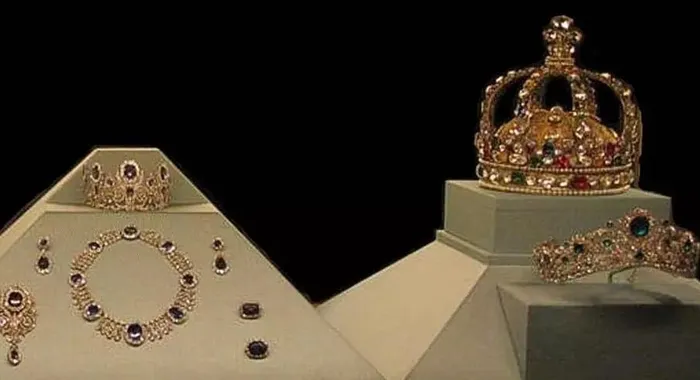
These are the the priceless Napoleonic jewels that were stolen at the Louvre Museum in Paris yesterday.
Image: YouTube
A spectacular daylight robbery at the Louvre Museum in Paris has shocked the world of art and history.
At about 9.30 am local time on Sunday, while tourists were already streaming through its grand halls, a small team of thieves entered the gallery housing the French crown jewels and in a matter of minutes slipped away with a trove of Napoleonic-era regalia.
The audacity of the raid, executed in broad daylight yet completed before many realised what was happening, has left France reeling.
Authorities have now launched a major manhunt as the full magnitude of what’s been lost begins to emerge.
These are the jewels, their history and value.
Crown of Empress Eugénie
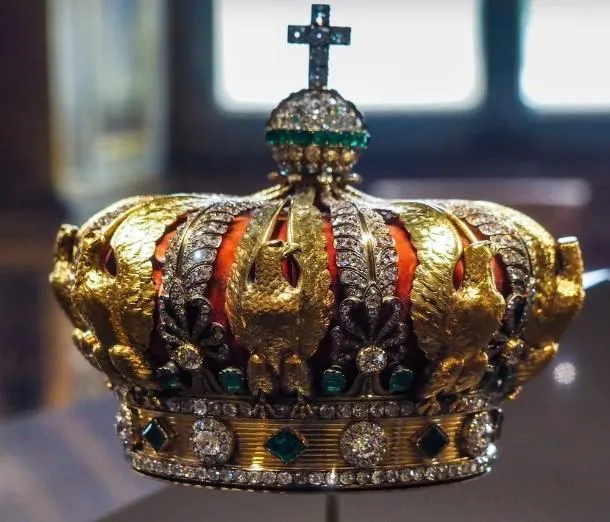
The crown of Princess Eugenie.
Image: Louvre Museum Paris
One of the most iconic pieces in the haul is the imperial crown of Empress Eugénie, consort of Napoléon III.
Crafted in 1855 by Alexandre-Gabriel Lemonnier, the crown features golden eagles set above a circlet of gold, is studded with 1,354 diamonds and 56 emeralds, and was designed to signal the splendour of the Second French Empire. Its current value runs into tens of millions of euros
Diadem of Empress Eugénie
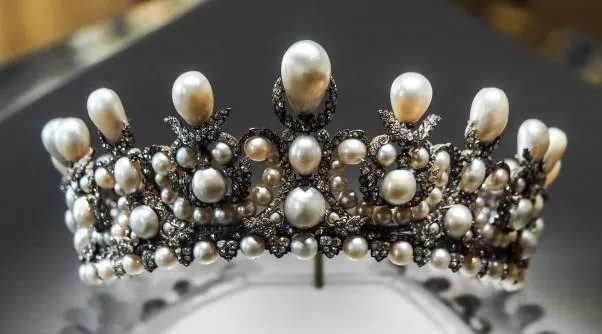
Diade.m of Princess Eugenie
Image: Louvre Museum Paris
Another jewel linked to the same Empress is a lavish diadem containing 212 pearls, 1,998 brilliant-cut diamonds, and 992 rose-cut diamonds.
Eugénie, the last Empress of France, was known for her lavish taste and political influence; after the fall of the empire in 1870 she went into exile, and this diadem stands as one of the few truly personal symbols of her imperial role.
The Diamond Bow Brooch of Empress Eugénie
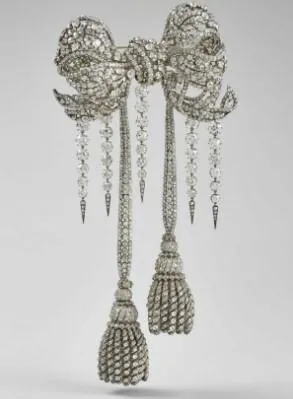
Empress Eugénie’s Diamond Bow Brooch.
Image: Louvre Museum Paris
This exquisite pendant or brooch (originally part of a jewelled belt) is composed of 2,438 diamonds and 196 rose-cut stones, designed in the ornate “passementerie” style combining silk threads and jewels, a hallmark of the glamour of the Second Empire.
It stands out not only for its sheer sparkle but for the way it displays the craftsmanship and extravagance of the era.
The Sapphire Parure: Tiara, Necklace and Earrings
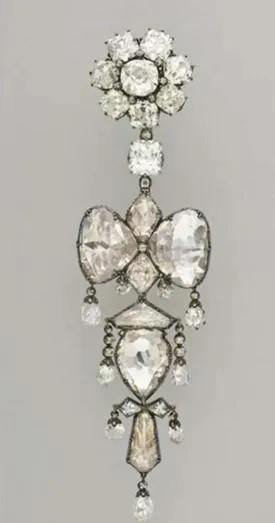
Empress Eugénie’s Reliquary Brooch
Image: Louvre Museum Parils
Royal courts of the 19th century prized parures, matched sets of jewellery for events and state occasions, and among those targeted in the heist was a sapphire-and-diamond suite dating from the early 1800s.
The tiara alone featured 24 Ceylon sapphires surrounded by 1,083 diamonds; the necklace eight large sapphires circled by diamonds. These belonged to figures such as Queen Hortense (wife of Louis Bonaparte) and Queen Marie‑Amélie (wife of Louis-Philippe I). Only one earring from the set was taken, the other remains in the Louvre’s collection.
Napoléon I’s Emerald Wedding Gift to Marie-Louise
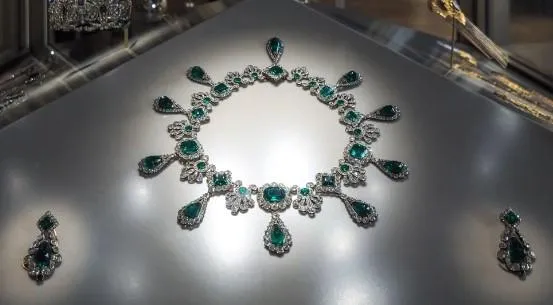
Napoléon I’s Emerald Wedding Gift to Marie-Louise
Image: Louvre Museum Paris
In 1810, Napoléon I married Marie‑Louise of Austria (great-niece of Marie Antoinette, daughter of Emperor Francis II), and the wedding gift he commissioned included a set adorned with 32 emeralds and 1,138 diamonds, arranged in intricate motifs of lozenges and pearls.
The Louvre acquired this set in 2004, and it stands as a testament to the culmination of Napoleonic grandeur and dynastic ambition.
Why selling the haul is nearly impossible
Although the net value of the stolen items is estimated at “hundreds of millions of euros,” perhaps even beyond, the thieves face a major dilemma: these jewels are infinitely recognisable.
With detailed catalogue records, high-resolution photographs and global media coverage, a crown set with more than 1,300 diamonds and dozens of emeralds cannot simply be fenced on the open market.
Experts say that the only realistic path to monetise such a haul is to dismantle the pieces: melting down the gold or platinum elements, recutting the stones to erase provenance, and selling them individually in smaller parcels on the fringes of the grey or black market.
Within days the trace of ownership risks vanishing forever, and with it, the chance of recovery intact. As one investigator warned, it’s now a race against time: if the jewels aren’t found swiftly, the likelihood of their safe return plummets dramatically.
These extraordinary pieces, from their imperial genesis to their dazzling descriptions, represent the huge challenge now facing law enforcement.
The robbery at the Louvre becomes not just a crime but a destruction of heritage. As the manhunt intensifies, the question looms: will we ever see these jewels again?
IOL Lifestyle
Related Topics: